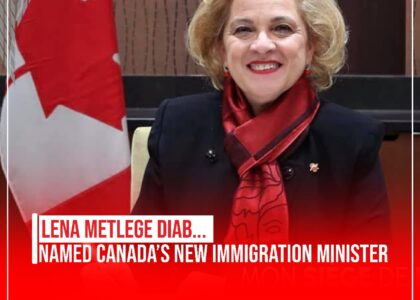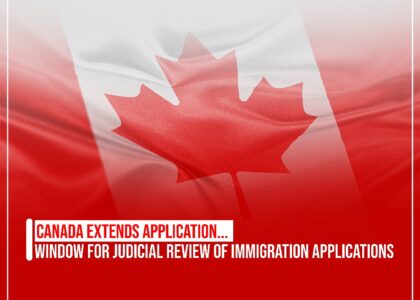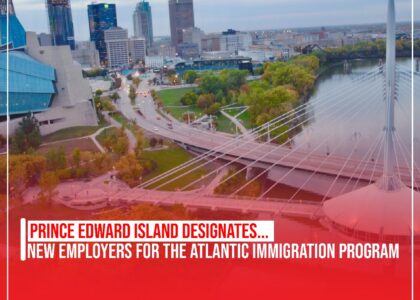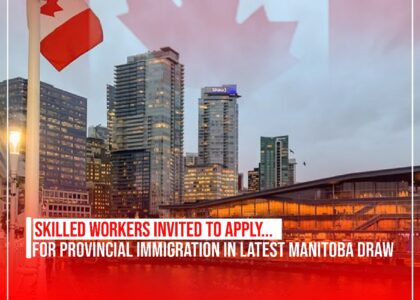Mark Carney, the newly appointed Prime Minister of Canada, has unveiled an immigration agenda that promises to reshape the country’s approach to immigration. As Canada continues to grapple with housing shortages, economic shifts, and international relations, Carney’s immigration policy is drawing significant attention. His vision seeks to strike a balance between the economic benefits of immigration and the challenges posed by rapid population growth. This article delves into Carney’s immigration strategy, exploring his proposal for immigration caps, prioritization of temporary residents, concerns over foreign workers, and more.
The Vision Behind Mark Carney’s Immigration Policy
Mark Carney’s stance on immigration is multifaceted, addressing both the challenges and opportunities posed by immigration. On one hand, Carney recognizes the critical role that immigration plays in growing Canada’s economy. On the other hand, he acknowledges the pressures that unregulated immigration can place on housing, healthcare, and social services. His goal is to implement a more balanced and sustainable immigration system that can support Canada’s growth without overwhelming its infrastructure.
A Proposed Cap on Immigration
One of the key proposals in Carney’s immigration agenda is to introduce a cap on immigration. This cap would be designed to ensure that immigration levels return to a “sustainable pre-pandemic trend” as Canada works to absorb the millions of newcomers who have arrived in recent years. Carney has been outspoken about the need for this adjustment, saying that Canada has been admitting more foreign workers, students, and new citizens than the country can adequately support. This includes sufficient housing, healthcare, and job opportunities for all.
The cap would act as a corrective measure following what Carney sees as overly generous immigration policies in recent years. By reducing the number of incoming immigrants, Carney aims to allow the country to catch up and ensure that new arrivals are properly integrated into Canadian society. However, the specifics of this cap—how it would be implemented, and which programs would be affected—remain unclear.
Prioritizing Temporary Residents for Permanent Residency
Another significant shift Carney has suggested is the prioritization of temporary residents for permanent residency (PR). This idea stems from Carney’s focus on “getting back on track” by absorbing the 4+ million people who have already arrived in Canada in recent years before adding more to the population.
Under the current immigration framework, there is a growing emphasis on transitioning temporary residents, such as foreign workers and students, to permanent residents. In fact, Canada’s recent Immigration Levels Plan set a target for 2025 that includes a substantial proportion of permanent residency admissions through the “In-Canada Focus” category. This category, aimed at admitting people already in Canada, could align with Carney’s approach, which focuses on absorbing and integrating the current population of temporary residents before continuing to expand immigration numbers.
Reining in Temporary Foreign Workers
Mark Carney has also expressed concerns over the increasing influx of temporary foreign workers (TFWs) into Canada. His criticism stems from the lack of oversight and control over the Temporary Foreign Worker Program (TFWP) during the COVID-19 pandemic. Many businesses sought temporary foreign workers to address labor shortages, but Carney believes that Canada allowed too many workers into the country without ensuring adequate support systems were in place.
The government’s Immigration Levels Plan already includes a reduction in new work permits for the TFWP, with the target remaining steady at 82,000 work permits per year from 2025 to 2027. This aligns with Carney’s concerns about limiting the number of temporary foreign workers, especially considering the strain they can place on the country’s housing and public services.
Addressing the Over-Reliance on International Student Fees
Carney has also raised concerns about Canada’s reliance on international student tuition fees. While international students contribute significantly to the Canadian economy, Carney argues that postsecondary institutions are becoming too dependent on this revenue. With provincial funding being frozen, universities and colleges across Canada have been increasingly relying on international students to meet their financial needs.
This over-reliance on tuition fees has led to fiscal challenges at many institutions, including budget deficits, layoffs, and program cuts. Carney advocates for a rethinking of the funding model for higher education, suggesting that Canada should reduce its dependence on international student fees by increasing provincial funding. This could help alleviate the strain on institutions and ensure that Canadian universities and colleges remain sustainable in the long term.
Tackling Canada’s Housing Crisis
One of the most pressing issues in Canada today is the housing crisis. With immigration playing a significant role in the growing demand for housing, Carney’s immigration policy is closely tied to the country’s housing challenges. As part of his broader economic strategy, Carney has pledged to “supercharge Canada’s housing plan.” This includes investing in the skilled trades workforce and expanding training and apprenticeship programs to address the labor shortages in the construction sector.
However, it remains unclear whether Carney will support direct federal funding for public housing initiatives. The Canadian federal government previously funded the creation of low-cost public housing, but ceased most of these efforts in the 1990s. Carney’s stance on this issue will be crucial in determining how Canada tackles the intersection of immigration and housing affordability.
Immigration and Canada’s National Identity
Despite the challenges that immigration poses, Carney has emphasized that immigration is central to Canada’s identity and economic success. He strongly believes that Canada’s pro-immigration policy is integral not only for economic growth but for maintaining the nation’s identity. Carney has repeatedly stated that Canada cannot afford to scale back immigration, as it is essential to the country’s future prosperity.
He recognizes the significant contributions that immigrants make to Canadian society, noting that a large portion of the population is either second-generation immigrants or immigrants themselves. Carney’s policy seeks to ensure that Canada remains a welcoming country for those seeking new opportunities while balancing the needs of Canadian citizens and residents.
Mark Carney’s Background
Before stepping into the political arena, Mark Carney had an illustrious career in economics and finance. Born in the Northwest Territories and raised in Edmonton, Alberta, Carney pursued his education at Harvard and Oxford, earning degrees in economics. His career included high-profile roles, including serving as the Governor of the Bank of Canada from 2008 to 2013, where he played a key role in steering the country through the global financial crisis. He later became the Governor of the Bank of England, a position he held from 2013 to 2020.
Carney has also been a vocal advocate for climate action, serving as the UN Special Envoy for Climate Action and Finance and chairing Brookfield Asset Management’s transition investing division.
What’s Next for Mark Carney?
As Canada’s Prime Minister, Carney is set to face significant challenges in implementing his immigration agenda. The upcoming federal elections, scheduled for October 20, 2025, or potentially sooner, will determine the political landscape under his leadership. As Canada grapples with the complex intersection of immigration, housing, and economic growth, Carney’s leadership will be key in shaping the nation’s future.
For those interested in staying updated on how Carney’s policies may affect immigration to Canada, Mansory Immigration Consultants offers expert guidance and insights. Whether you are considering moving to Canada for work, study, or permanent residence, our team of experienced consultants is ready to help you navigate the complexities of Canada’s immigration system. Visit www.mansoryconsultants.com today to learn more about how we can support your immigration journey.
Stay connected for the latest updates on Canada’s immigration policies and how they will shape your future in this vibrant and welcoming country!





